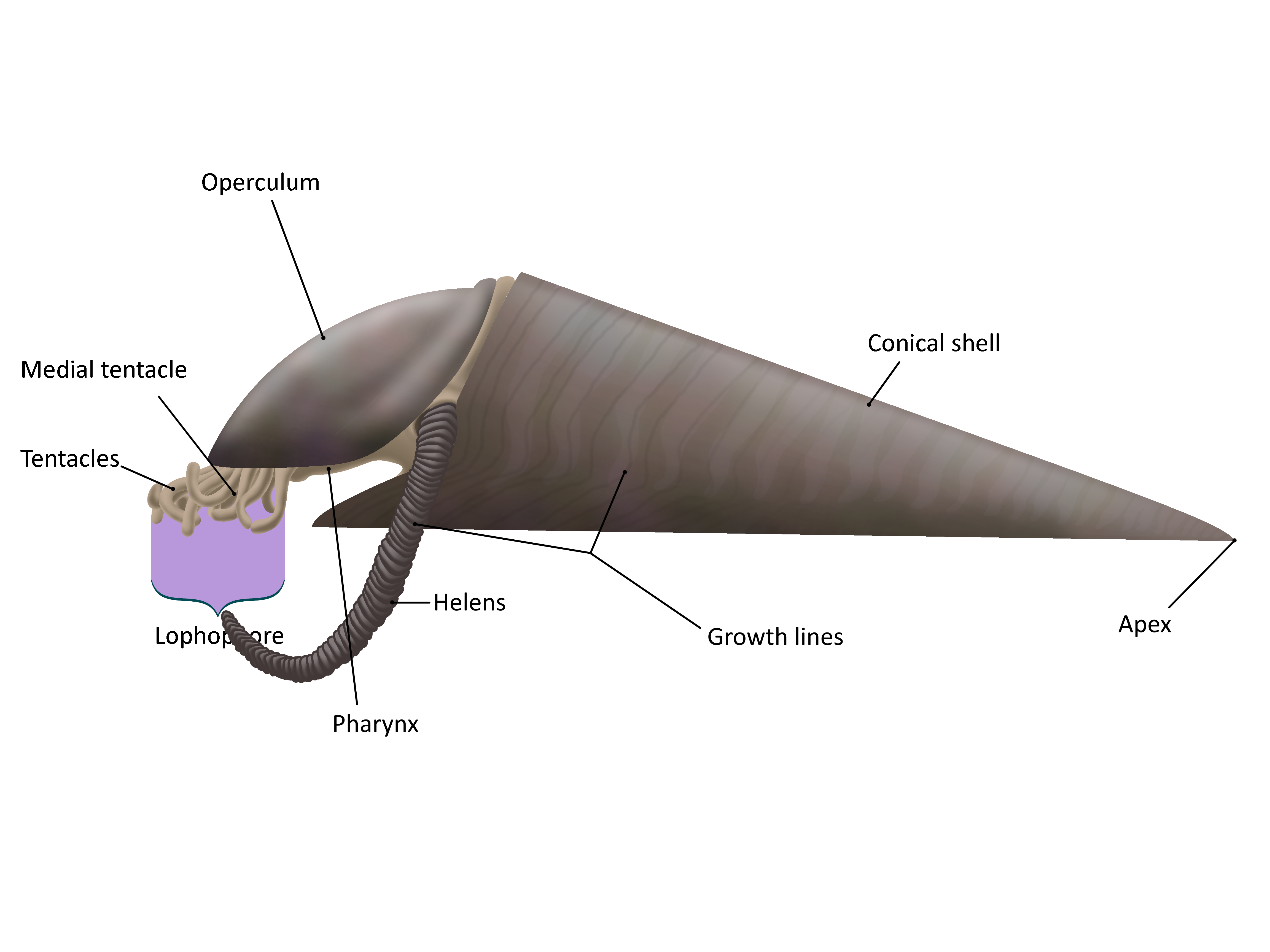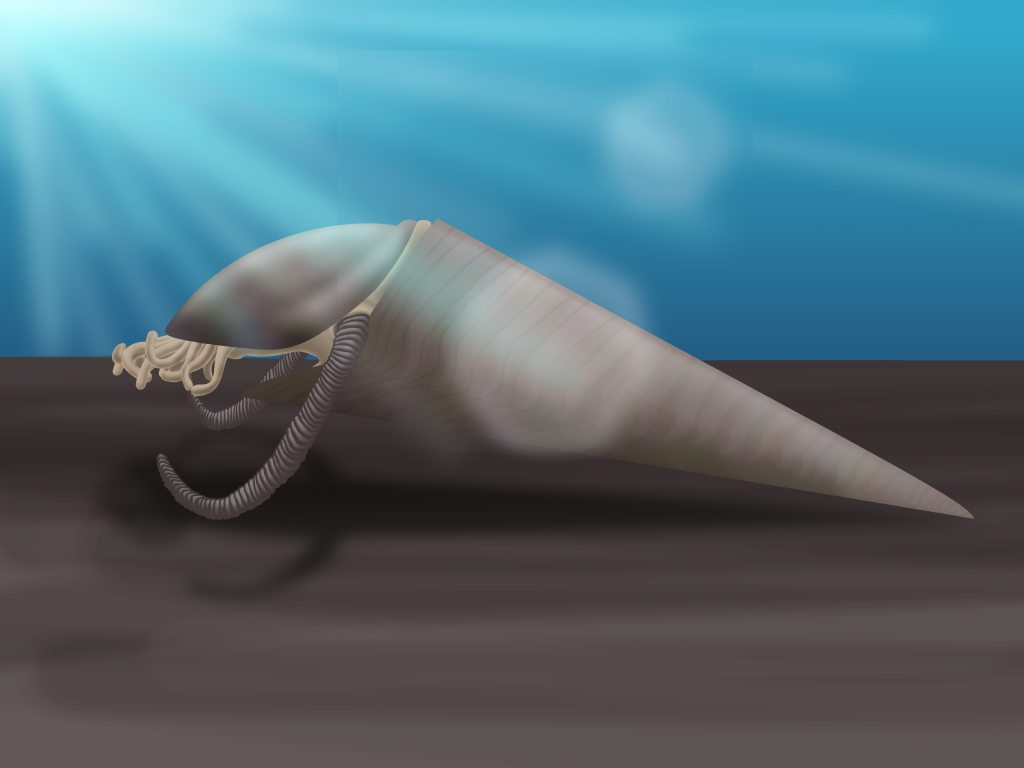
Hyolithids were organisms with conical shells with a triangular cross section that have been attributed to Annelid worms, Mollusks, and even a new phylum. More recently they have been confirmed to have been lophophorates and their mode of life uncovered. Hyoliths ranged from the Cambrian to the Permian, but were rare in the late Paleozoic.
Hyoliths found at Seven Stars
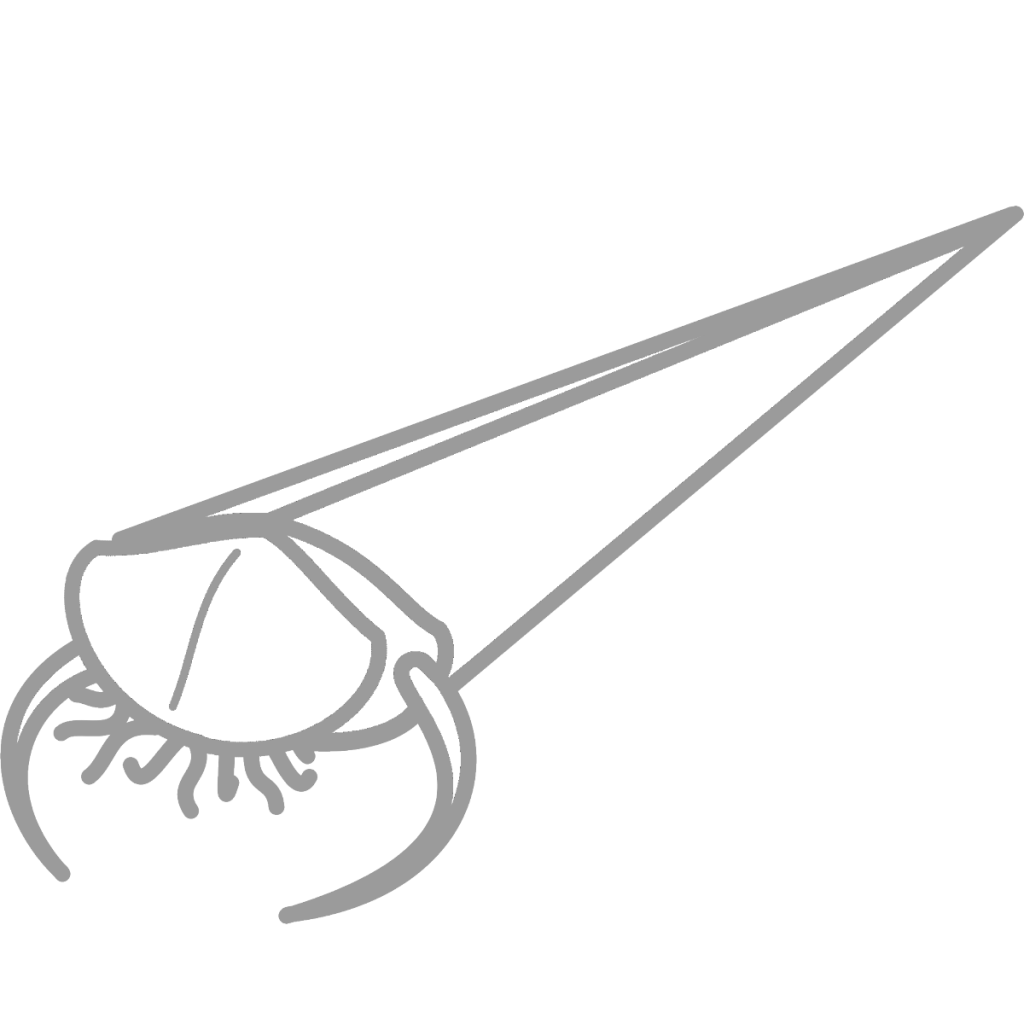
Hallotheca aclis
COMMON
How do I identify Hyoliths?
At Seven Stars, Hallotheca aclis is the only Hyolith. Hallotheca, like all Hyoliths, had a rapidly expanding conical shell that had a rounded triangular cross section. However, it is rare to find an uncrushed Hyolith; often they are compressed so that the dorsal point is rammed into contact with the ventral surface. Hallotheca has a smoother shell than other local Hyolithids, and often the shell is carbonized. Hyoliths can be differentiated from Cephalopods from Seven Stars because o cephalopods have such a rapidly expanding shell and do not crush in the same way (Figure 1).
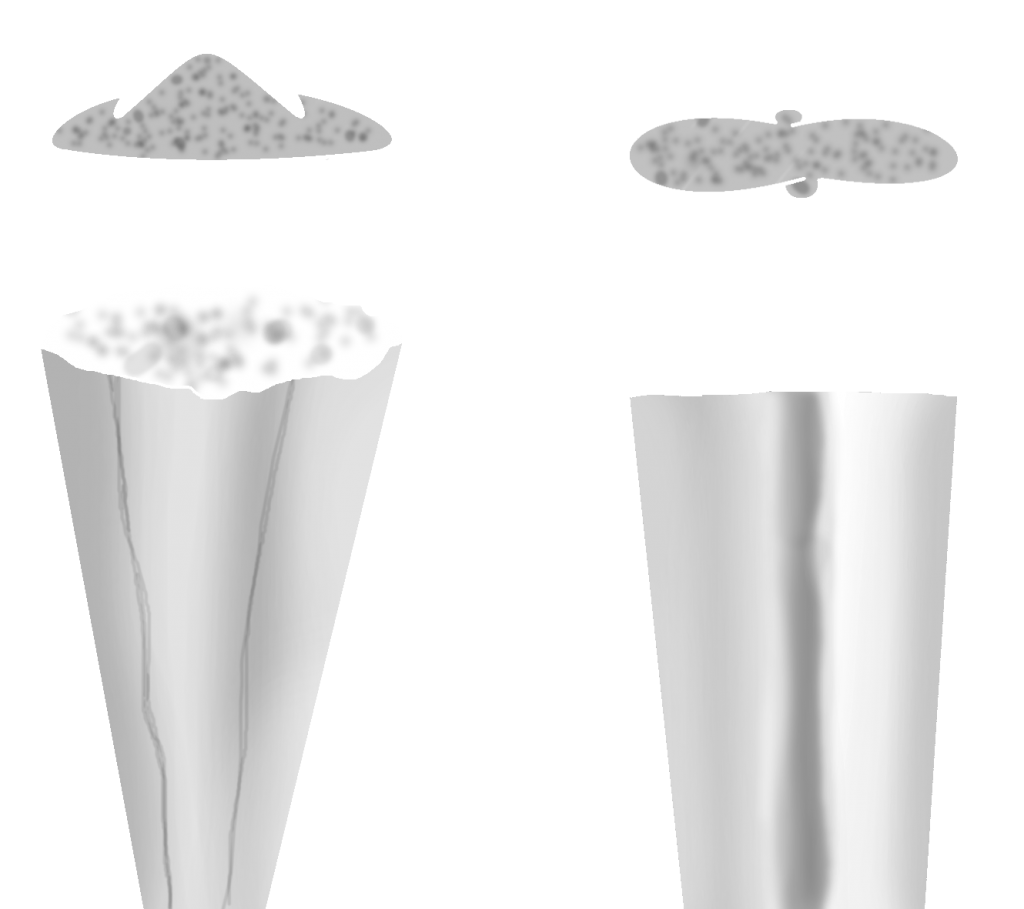
Left: A crushed Cephalopod such as Bactrites or Michelinoceras showing how the shell is crushed around the siphuncle but is slightly offset.
What Were Hyoliths?
In the past Hyoliths have been put into many groups because their soft tissues were mostly unknown More recently, Cambrian fossils have revealed their basic anatomy 2. Hyoliths had a characteristic, conical shell capped with a rounded operculum 1,2,3,4,5. This could close the entrance of the shell for safety purposes 3. Hyoliths were lophophorates like Bryozoans, Tentaculitids, Phoronid worms, Hyoliths, and Brachiopods. As lophophorates they had lophophores, filamentous filtering organs used for feeding and respiration. Hyoliths had two branches in its lophophore, each with several tentacles. In the center was the mouth, with two medial tentacles to aid in transferring filtered material into the mouth 2. There are two main groups within Hyolitha, the Orthothecids and the Hyolithids. While Hyolithids mainly stick to one form, the Orthothecids were more variable. Hyolithids had a simple U-shaped digestive track, with the anus opening over the head and slightly obscured by the operculum. Orthothecids, on the other hand, had a U-shaped gut, but one branch had wide a zig-zagging pattern that may have made retreating inside the shell possible 5; Orthothecids also lacked large horns called helens that are found in Hyolithids 4.
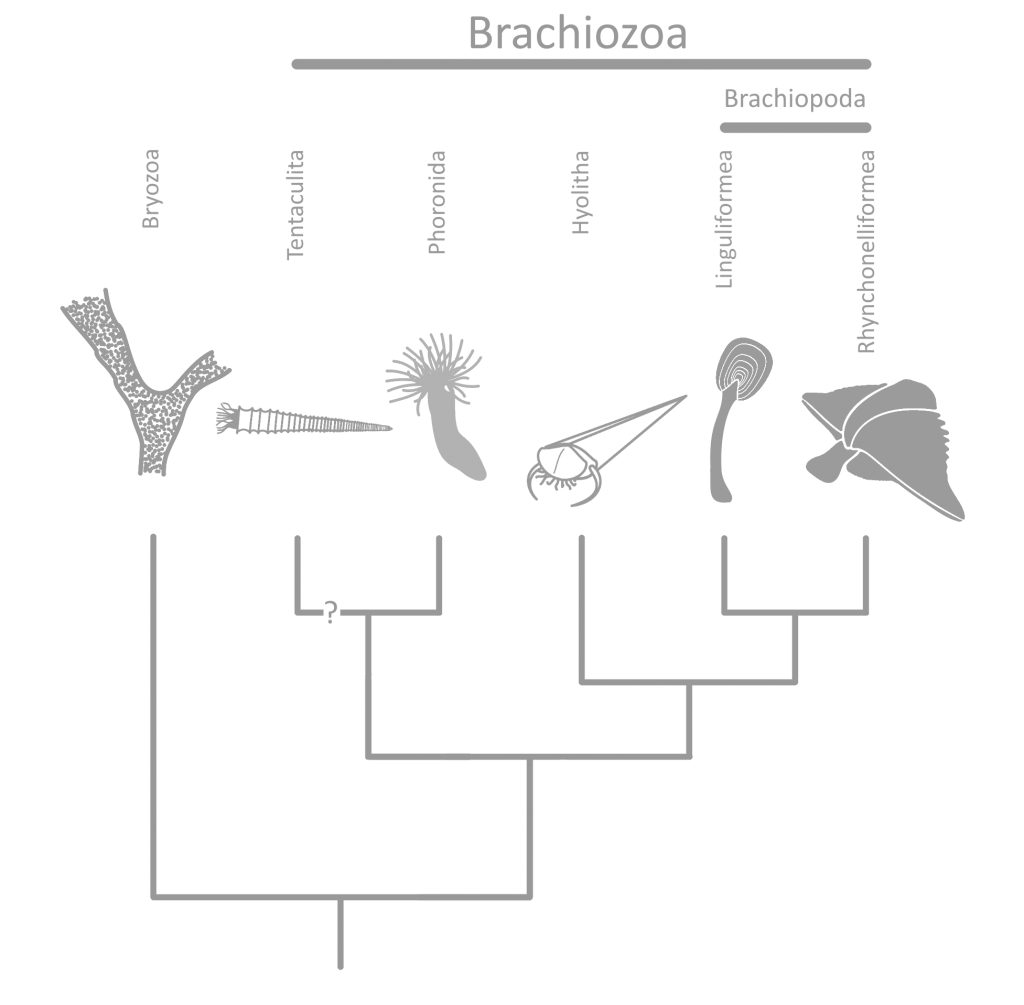
Read more about Lophophorates from Seven Stars with the links below:
Brachiopods Tentaculitids Bryozoans (this post has not yet been released)
The helens were gently curving, compressed structures made of calcite 3. They were inserted through notches in the operculum and shell and are thought to have originated from the radiating rods found on the internal surface of the operculum 4. They were mobile, propping the Hyolithid above the seafloor and into the water column so that more plankton could be ingested 2, 4. This could be seen as a way to make up for the shorter gut when compared to the Orthothecids, which could filter more nutrients of out their food as a result of their longer digestive track. The helens were grown by secreting many layers shaped like cups outwardly to partially envelop the previous layer, with an organic core in the center. This style of growth caused the helens to have a rugged appearance with strong growth lines 3. The helens are very rarely preserved, so few fossils exist with none from the Devonian Period. Similarly, the operculum is difficult to find articulated with the shell 1 because it was detached during fossilization.
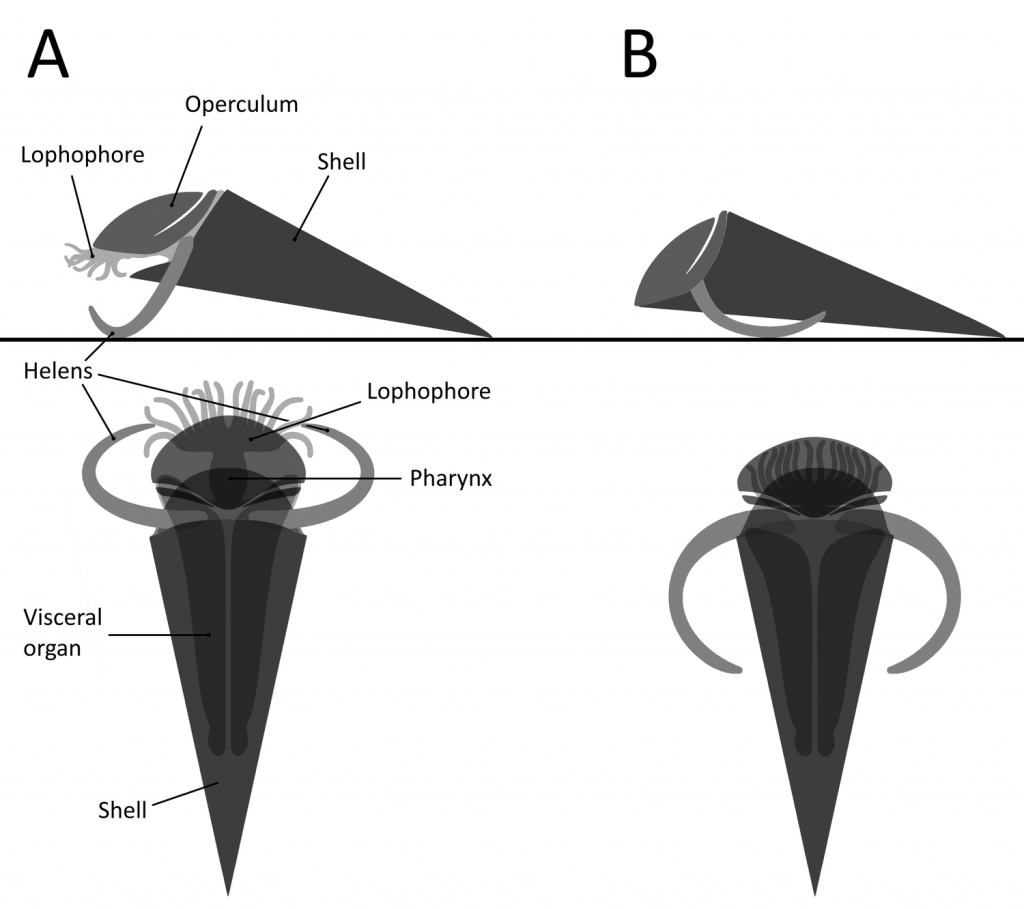
Hyolithids could pull their heads into their shells, rotating their helens to face backwards and lower the aperture towards the seafloor 2. The operculum closed off the aperture to keep predators out 3, though boring parasites are known to have plagued Middle Devonian Hyolithids because of deep circular holes found in shells. These parasites would have lived off of the Hyolithid’s nutrients 5.
Hyoliths at Seven Stars
Only one species of Hyolithid Hyolith has been found at Seven Stars. These are rare and often crushed.
Hallotheca aclis
Hallotheca had a smooth, conical shell with a rounded triangular cross section. It had a very rounded operculum with only a slight indent running down the center. Hallotheca had a much smoother shell than other Hamilton Group Hyoliths (like Hyolithes striatus), with more obscured growth lines 2.
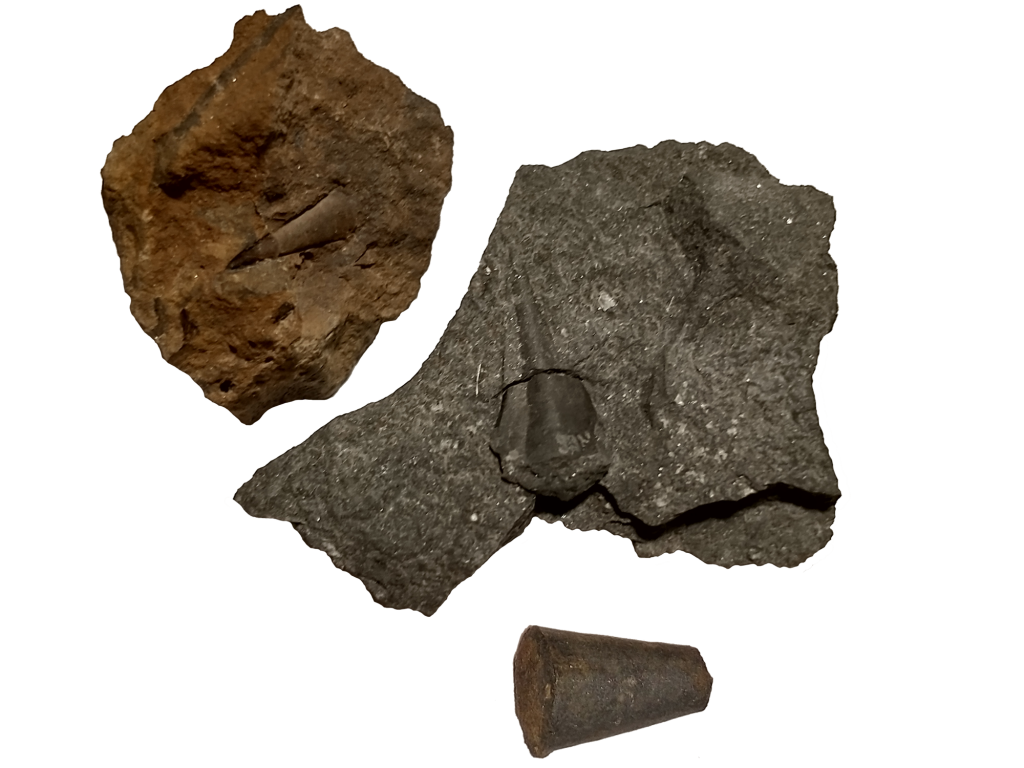
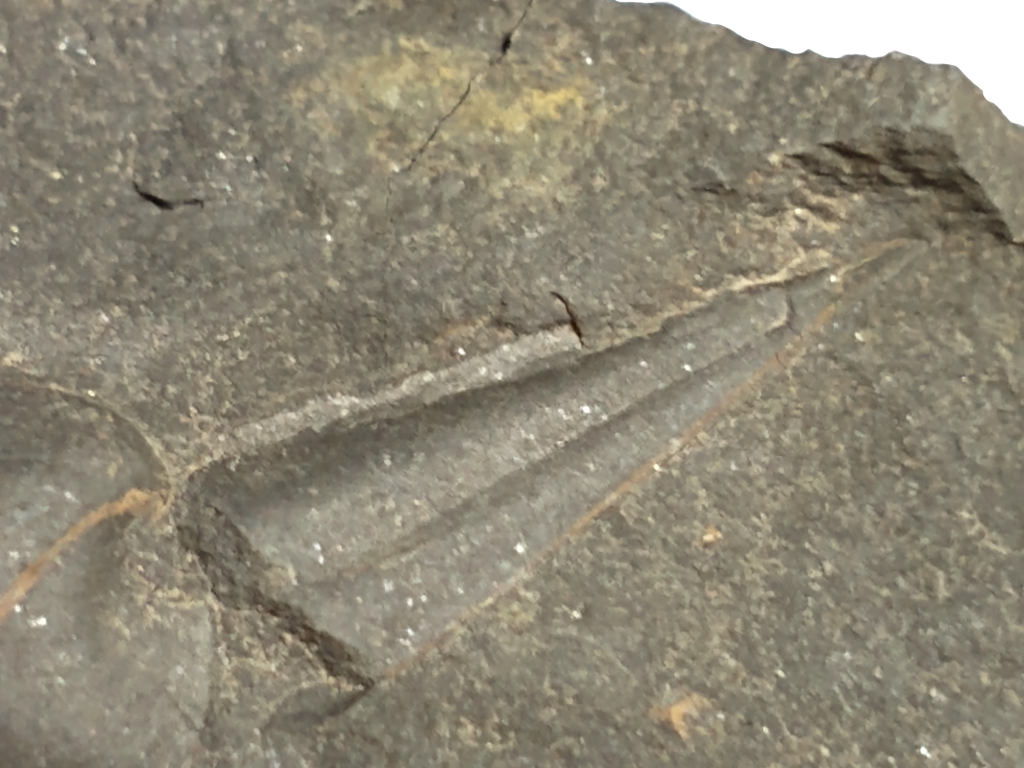
Works cited
(2) Wilson, K. A. (2014). Field guide to the Devonian fossils of New York (3rd ed.). Paleontological Research Institution.
(2) Moysiuk, J. and Smith, M.R. and Caron, J.-B. (2017) Hyoliths are Palaeozoic lophophorates, Nature, 541 .pp. 394-397. https://dro.dur.ac.uk/20195/1/20195.pdf
(3) MUS, M.M. and BERGSTRÖM, J. (2007), SKELETAL MICROSTRUCTURE OF HELENS, LATERAL SPINES OF HYOLITHIDS. Palaeontology, 50: 1231-1243. https://doi.org/10.1111/j.1475-4983.2007.00700.x
(4) Christian B. Skovsted, Mónica Martí Mus, Zhiliang Zhang, Bing Pan, Luoyang Li, Fan Liu, Guoxiang Li, Zhifei Zhang. (2020). On the origin of hyolith helens, Palaeogeography, Palaeoclimatology, Palaeoecology, Volume 555, 2020, 109848, ISSN 0031-0182, https://www.sciencedirect.com/science/article/pii/S0031018220302935?ref=cra_js_challenge&fr=RR-1
(5) Baumiller, Tomasz & MARINOVIC, JOHN & Tuura, Megan & Damstra, Emily & MILLER, DANIEL. (2010). Signs of boring predation on middle Devonian hyolithids from the Michigan Basin. PALAIOS. 25. 636-641. 10.2307/40865496. https://www.researchgate.net/publication/261926417_Signs_of_boring_predation_on_middle_Devonian_hyolithids_from_the_Michigan_Basin
(5) Devaere, Léa & Clausen, Sébastien & Alvaro, José-Javier & Peel, John & Vachard, Daniel. (2014). Terreneuvian Orthothecid (Hyolitha) Digestive Tracts from Northern Montagne Noire, France; Taphonomic, Ontogenetic and Phylogenetic Implications. PloS one. 9. e88583. 10.1371/journal.pone.0088583. https://www.researchgate.net/publication/260214215_Terreneuvian_Orthothecid_Hyolitha_Digestive_Tracts_from_Northern_Montagne_Noire_France_Taphonomic_Ontogenetic_and_Phylogenetic_Implications

